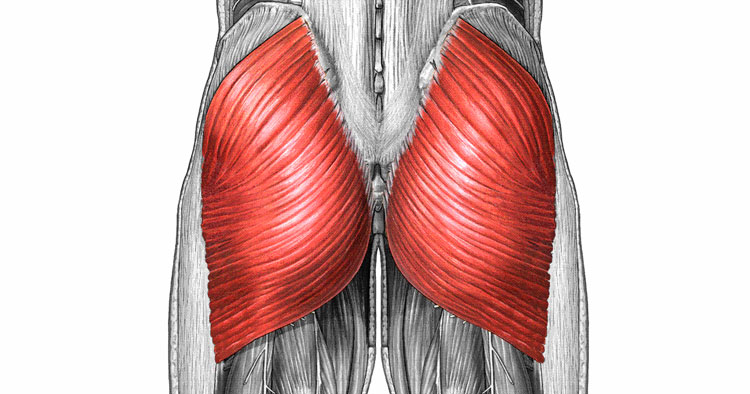Muscle Pain and Tendinopathy
Gluteus Maximus: Muscle Of The Week
A Powerful Muscle That Helps You Maintain Upright Postures
Gluteus maximus often referred to as glute max in short, is the most superficial of all the gluteal muscles and is in fact the largest and heaviest muscle in the body. This large muscle size allows glute max to be able to generate significant contraction forces as a hip extensor and perform its function as a powerful hip extensor and helping maintain us in an upright posture.
The Basic Anatomy Of The Gluteus Maximus Muscle
Glute max originates from a wide surface area including parts of the pelvis and the associated fascia of the lower back. These origins help create a relationship between the gluteal muscles and lumbar and thoracic musculature via “myofascial slings”. From these muscles origins off the pelvis and fascia the muscle fibers create a quadrilateral shape, of which the two layers of muscle pass down inserting into the Iliotibial tract and the gluteal tuberosity of the femur. Visually gluteus maximus is a superficial muscle covering the majority of the two deeper gluteal muscles (the gluteus minimus and gluteus medius).
Gluteus Maximus Function
The main anatomical action of the gluteus maximus muscle is to powerfully extend the hip joint, however as well as this glute max can act to externally rotate the hip joint and also assist other muscles in providing both hip adduction and abduction depending on the starting position of the leg. Due to gluteus maximus ability to act as a powerful hip extensor, daily activities including running and climbing stairs are made possible due to your glute max.
Along with the hamstrings, glute max works to extend the trunk from a flexed position, when straightening up from a forward bent position (as when returning from picking something up from the floor). Eccentric and concentric contractions of glute max respectively work to control the level of hip flexion/extension during bending down and rising from forward bent positions.
Additional functions that the gluteus maximus muscle assists with:
- Through the insertion of its fibers into the Iliotibial tract glute max can extend the knee and support the lateral aspect of the knee, commonly when the quadriceps are functioning poorly as occurs following knee injury, or surgery then through the ITB glute max will assist with knee extension and knee stability.
- It is suggested through the muscles attachments in the pelvis that glute max can assist in bracing / stabilizing the sacroiliac joint (SIJ).
- In standing gluteus maximus muscle has the ability to cause lateral rotation of the femur through this action it can assist in raising the medial longitudinal arch of the foot (the main arch on the inside border of the foot) and therefore has another role in the body as far afield as potentially assisting with foot stability.
Disclaimer: Sydney Physio Clinic provides this information as an educational service and is not intended to serve as medical advice. Anyone seeking specific advice or assistance on Gluteus Maximus: Muscle Of The Week should consult his or her personal trainer, physiotherapist, general practitioner or other appropriately skilled practitioner.


